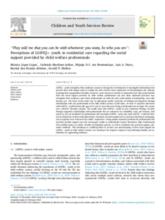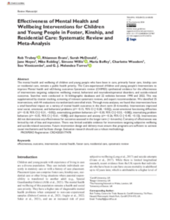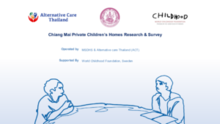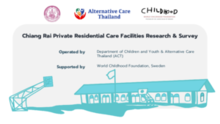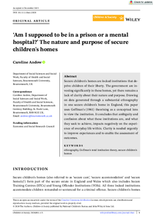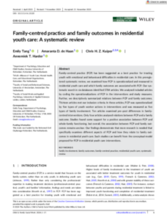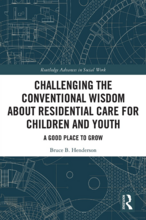Displaying 1 - 10 of 1458
The focus of this study was to understand youths’ processes of resilience-development through relationships with care professionals in the child welfare system. In this study, the authors held 15 narrative interviews with LGBTQ+ youth between the ages of 14 and 21 years that were living in residential care in Spain.
The purpose of this CHIMES review and meta-analysis was to evaluate the effectiveness of interventions evaluated via randomized controlled trials (RCTs) for improving mental health and wellbeing outcomes for care experienced children and young people.
This is a summary of children's homes in the Chiang Mai Province of Thailand over the last 1.5 years. The research team visited a total of 371 private children's homes. This summary provides an extensive and useful data set for those interested in the reform of private children's homes.
This is a summary of every private residential care facility in the Chiang Rai Province of Thailand, including institutional care homes, children’s homes, and residential schools. This summary provides an extensive and useful data set for those interested in the reform of private children's homes.
Group climate in residential youth care is considered to be essential for treatment of youth and young adults. Various instruments exist to measure quality of living group climate, but some are lengthy, use complicated wording, which make them difficult to fill out by youth and individuals with a mild intellectual disability. The present study based in the Netherlands describes the development and rationale for the Group Climate Instrument—Revised (GCI-R).
Drawing on data generated through a substantial ethnography in one secure children's home in England, this paper uses Goffman's (1961) theorising as a conceptual lens to view the institution.
Family-centred practice (FCP) has been suggested as a best practice for treating youth with emotional and behavioural difficulties in residential care. In this preregistered global systematic review, the authors examined how FCP is operationalized and measured in residential youth care and which family outcomes are associated with FCP.
Description:
Is residential care 'inherently harmful'? This book argues that this conventional wisdom is wrong and is, itself, harmful to a significant number of children and youth.
Daniela Mamaliga, Director of Partnerships for Every Child, presents the findings and conclusions of a comprehensive 2022 financial assessment conducted by CTWWC in six residential institutions. The financial assessments aimed to inform political decisions on the future of the six institutions, including their transformation/reorganization plans. Ms. Mamaliga highlights that though the average annual cost for caring for a child is increasing in all six institutions, even as number of children and staff is decreasing in some of them.
The process of changing the model of service provided by an organization from one that is residential care service focused to a non-residentia

